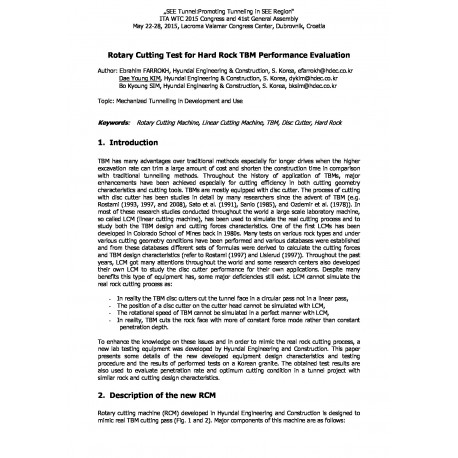Cart
0
0
No document
0,00 €
Total
Document successfully added to your shopping cart
Quantity
Total
There are 0 items in your cart.
There is 1 item in your cart.
Total documents
Total shipping
To be determined
Total
Search & filter
Search for a publication
Search & filter
Viewed documents
Rotary Cutting Test for Hard Rock TBM Performance Evaluation
wtc2015_full_farrokh_3735
D. Y. Kim / E. Farrokh / B. K. Sim
TBM has many advantages over traditional methods especially for longer drives when the higher excavation rate can trim a large amount of cost and shorten the construction time in comparison with traditional tunnelling methods. Throughout the history of application of TBMs, major enhancements have been achieved especially for cutting efficiency in both cutting geometry characteristics and cutting tools. TBMs are mostly equipped with disc cutter. The process of cutting with disc cutter has been studies in detail by many researchers since the advent of TBM (e.g. Rostami (1993, 1997, and 2008), Sato et al. (1991), Sanio (1985), and Ozdemir et al. (1978)). In most of these research studies conducted throughout the world a large scale laboratory machine, so called LCM (linear cutting machine), has been used to simulate the real cutting process and to study both the TBM design and cutting forces characteristics. One of the first LCMs has been developed in Colorado School of Mines back in 1980s. Many tests on various rock types and under various cutting geometry conditions have been performed and various databases were established and from these databases different sets of formulas were derived to calculate the cutting forces and TBM design characteristics (refer to Rostami (1997) and Lislerud (1997)).




